-
1137
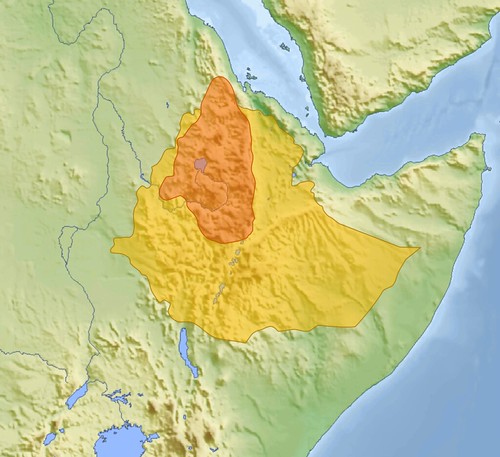 Mara Takla Haymanot overthrows the last ruler of Axumite dynasty, founded by Jewish queen Gudit 40 years before, and starts the Zagwe dynasty, the first dynasty in Empire of Ethiopia
Mara Takla Haymanot overthrows the last ruler of Axumite dynasty, founded by Jewish queen Gudit 40 years before, and starts the Zagwe dynasty, the first dynasty in Empire of Ethiopia -
1150 ± 50The Kebra Negast, an Ethiopian text claiming that the Queen of Sheba came from Ethiopia to see Solomon and that he tricked her into sleeping with him and bearing him a son, appears
-
1197
 Lalibela Cross, a large and elaborately decorated processional cross, is made from one piece of metal in Ethiopia
Lalibela Cross, a large and elaborately decorated processional cross, is made from one piece of metal in Ethiopia -
1270
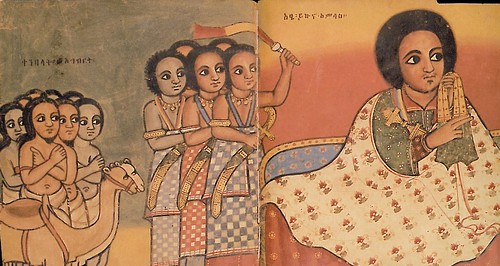 Solomonic dynasty, whose members claimed patrilineal descent from King Solomon of Israel, is founded in Ethiopia by Yekuno Amlak, a member of the Habesha people, from whom Abyssinia gets its name
Solomonic dynasty, whose members claimed patrilineal descent from King Solomon of Israel, is founded in Ethiopia by Yekuno Amlak, a member of the Habesha people, from whom Abyssinia gets its name -
April 9, 1520
 The first European diplomatic mission to Ethiopia, sent by the Portuguese, arrives at Massawa, followed by their arrival at the imperial encampment of Emperor Dawit II in Shewa on 9 October
The first European diplomatic mission to Ethiopia, sent by the Portuguese, arrives at Massawa, followed by their arrival at the imperial encampment of Emperor Dawit II in Shewa on 9 October -
March 9, 1529
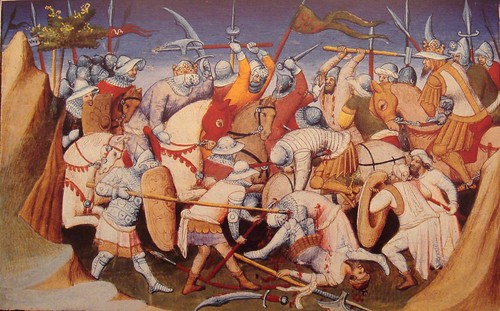 Imam Ahmad Gragn defeats the Ethiopian Emperor Dawit II in the Battle of Shimbra Kure, the opening clash of the Ethiopian–Adal War
Imam Ahmad Gragn defeats the Ethiopian Emperor Dawit II in the Battle of Shimbra Kure, the opening clash of the Ethiopian–Adal War -
1557
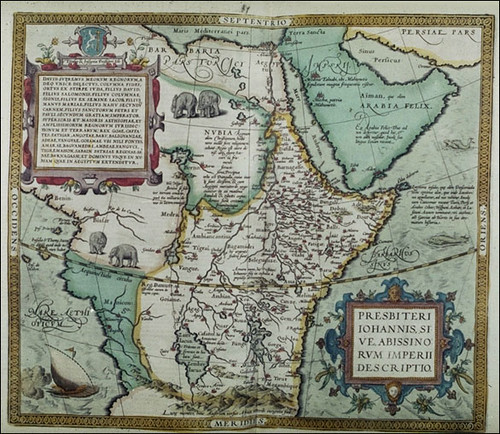 The Ottomans capture Massawa, a city on the Red Sea coast of Eritrea, isolating Ethiopia from the rest of the world
The Ottomans capture Massawa, a city on the Red Sea coast of Eritrea, isolating Ethiopia from the rest of the world -
1636
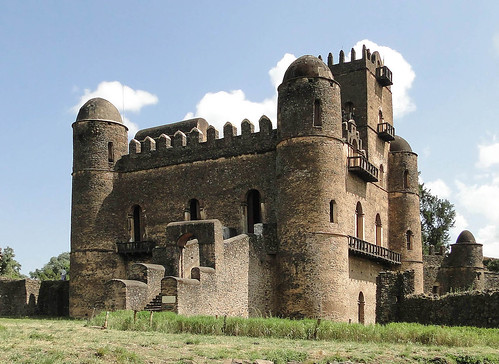 Emperor Fasilides founds the city of Gondar, which becomes the capital of Ethiopia for the next two centuries
Emperor Fasilides founds the city of Gondar, which becomes the capital of Ethiopia for the next two centuries -
May 7, 1769
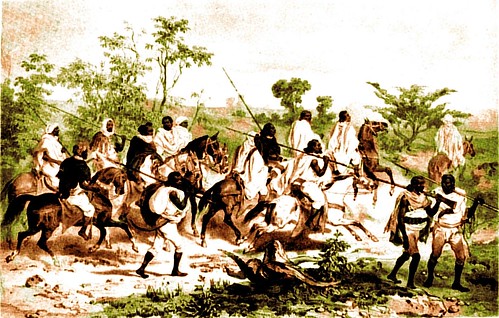 Zemene Mesafint, or Princes era, a period in Ethiopia, when the empire was divided into several regions with no effective central control, begins since the overthrow of Emperor Iyoas
Zemene Mesafint, or Princes era, a period in Ethiopia, when the empire was divided into several regions with no effective central control, begins since the overthrow of Emperor Iyoas -
April 13, 1868
 Tewodros II, Emperor of Ethiopia, commits suicide with a pistol presented him by Queen Victoria at Magdala as the British troops storm the citadel
Tewodros II, Emperor of Ethiopia, commits suicide with a pistol presented him by Queen Victoria at Magdala as the British troops storm the citadel -
January 26, 1887
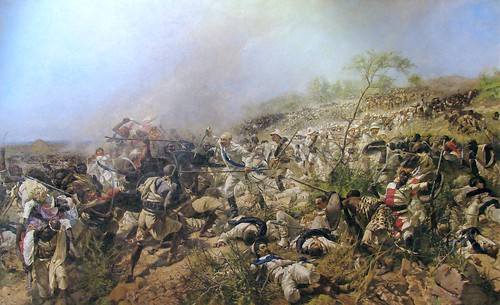 Abyssinian Emperor Yohannes IV defeats Italians in the Battle of Dogali
Abyssinian Emperor Yohannes IV defeats Italians in the Battle of Dogali -
March 10, 1889
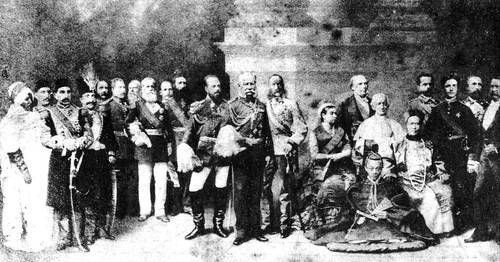 In Ethiopia Emperor Yohannes IV is killed in a war against the dervishes during the Battle of Gallabat
In Ethiopia Emperor Yohannes IV is killed in a war against the dervishes during the Battle of Gallabat -
March 25, 1895
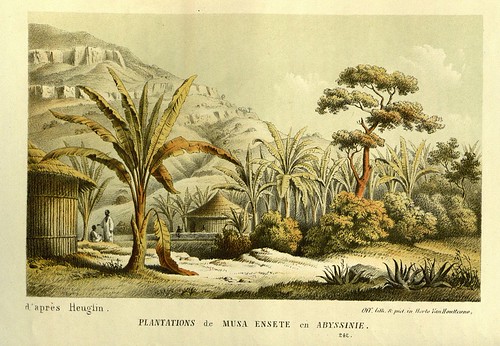 Italian troops invade Abyssinia, starting First Italo-Ethiopian War
Italian troops invade Abyssinia, starting First Italo-Ethiopian War -
December 8, 1895
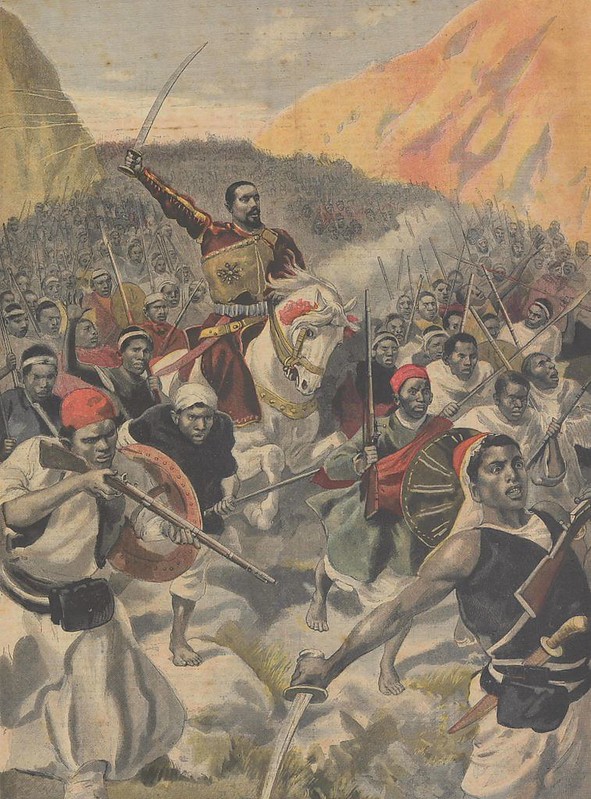 Ethiopian emperor Menelik II drives Italian General Baratieri out in Battle of Amba Alagi during the First Italo–Ethiopian War
Ethiopian emperor Menelik II drives Italian General Baratieri out in Battle of Amba Alagi during the First Italo–Ethiopian War -
March 1, 1896
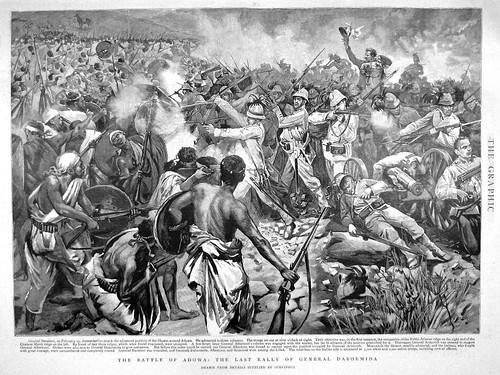 Ethiopia defeats Italy at the Battle of Adwa during the First Italo-Ethiopian War and ensures the first victory of an African state over a European colonial power
Ethiopia defeats Italy at the Battle of Adwa during the First Italo-Ethiopian War and ensures the first victory of an African state over a European colonial power -
November 2, 1930
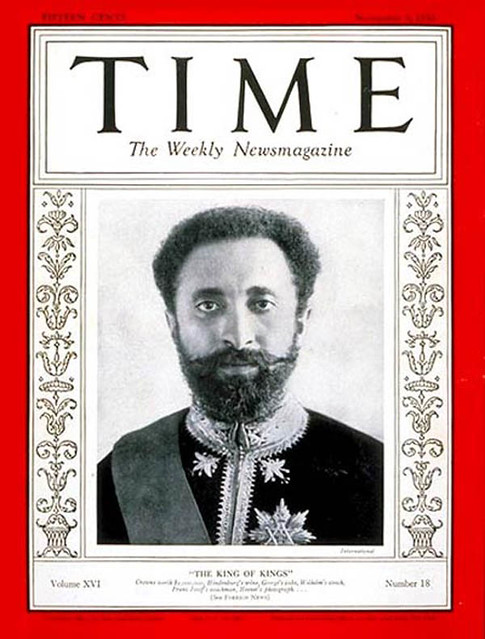 Haile Selassie, a defining figure in both Ethiopian and African history and the messiah in the Rastafari movement, is crowned Haile Selassie I, the 225th emperor of Solmonic Dynasty in Abyssinia
Haile Selassie, a defining figure in both Ethiopian and African history and the messiah in the Rastafari movement, is crowned Haile Selassie I, the 225th emperor of Solmonic Dynasty in Abyssinia -
October 2, 1935
 Italy invades Abyssinia, today Ethiopia, beginning Second Italo-Abyssinian War, which concluded with the exile of Emperor of Ethiopia Haile Selassie and the conquest of Abyssinia by Benito Mussolini
Italy invades Abyssinia, today Ethiopia, beginning Second Italo-Abyssinian War, which concluded with the exile of Emperor of Ethiopia Haile Selassie and the conquest of Abyssinia by Benito Mussolini -
May 9, 1936
 Italy takes Addis Ababa, annexing Abyssinia and incorporates it with Italian Somaliland and Italian Eritrea into the new colony of Italian East Africa
Italy takes Addis Ababa, annexing Abyssinia and incorporates it with Italian Somaliland and Italian Eritrea into the new colony of Italian East Africa -
August 27, 1942
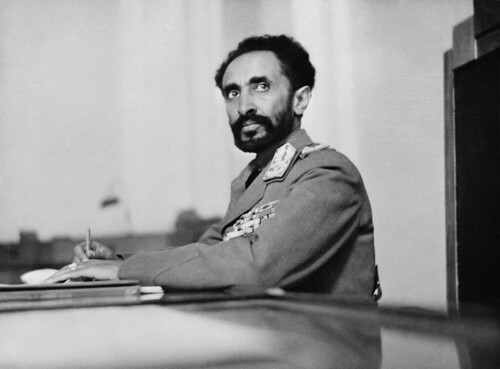 Emperor Haile Selassie of Ethiopia ends slavery imposing severe penalties, including death, for slave trading
Emperor Haile Selassie of Ethiopia ends slavery imposing severe penalties, including death, for slave trading -
June 26, 1945United Nations Charter, the foundational treaty of the United Nations, is signed by 50 nations in San Francisco, California, United States
-
September 12, 1974
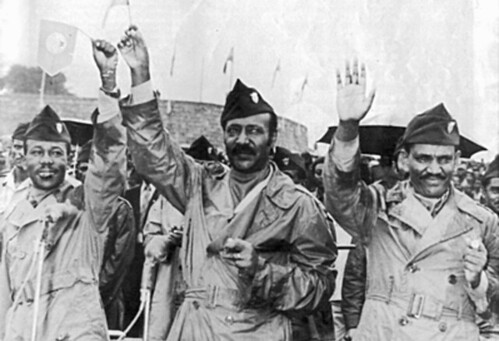 A Soviet-backed Marxist-Leninist military junta, the "Derg" led by Mengistu Haile Mariam, depose Emperor Haile Selassie and establish communist state known as People's Democratic Republic of Ethiopia
A Soviet-backed Marxist-Leninist military junta, the "Derg" led by Mengistu Haile Mariam, depose Emperor Haile Selassie and establish communist state known as People's Democratic Republic of Ethiopia
Thursday, March 30, 2017
Ethiopian Empire
Tuesday, February 28, 2017
Today in History
-
This Day in History
 Hello, everyone! We are glad to introduce to you our new project. It is wonderful timeline for this very day. Every day you can read about the best evets that happened in the past. Enjoy reading!/div>
Hello, everyone! We are glad to introduce to you our new project. It is wonderful timeline for this very day. Every day you can read about the best evets that happened in the past. Enjoy reading!/div>
Saturday, February 18, 2017
Minoan Civilization
-
2700 BC
 One of the earliest known civilizations in the Aegean world, the Minoan civilization, rise on the island of Crete beginning the period of flourishing
One of the earliest known civilizations in the Aegean world, the Minoan civilization, rise on the island of Crete beginning the period of flourishing -
2000 BC
 The first palace of Phaistos is built in south central Crete by Minoan civilization
The first palace of Phaistos is built in south central Crete by Minoan civilization -
1900 BC
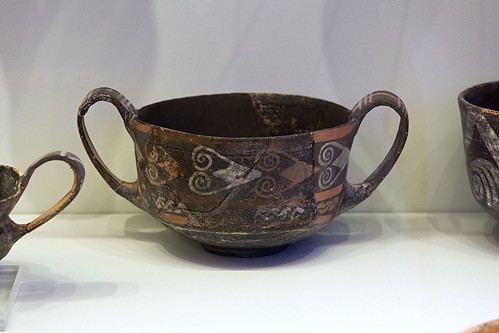 The potter's wheel is introduced in Minoan civilization, making designs of ceramic more free and graceful
The potter's wheel is introduced in Minoan civilization, making designs of ceramic more free and graceful -
1900 BC
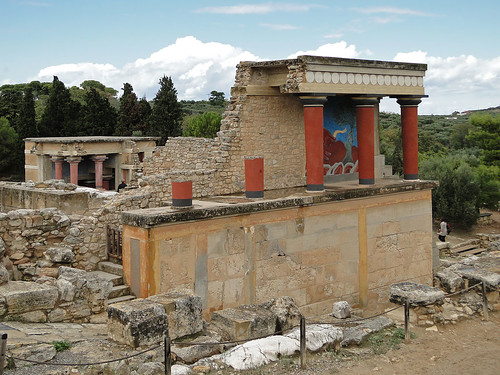 The first palace in the ancient city of Knossos, which considered as Europe's oldest city, is built by Minoan civilization on Crete
The first palace in the ancient city of Knossos, which considered as Europe's oldest city, is built by Minoan civilization on Crete -
1700 BC
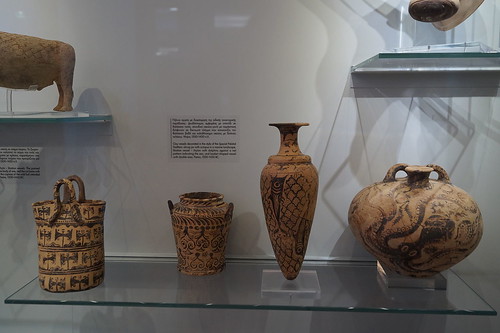 Naturalistic forms such as fish, squid, birds, and lilies in Minoan pottery decoration becomes common
Naturalistic forms such as fish, squid, birds, and lilies in Minoan pottery decoration becomes common -
1627 BCAn eruption of the volcano Thera in the Aegean Sea devastates the island of Thera including the Minoan settlement at Akrotiri and generates 150 m high tsunami that devastates the Minoan coastal settlements on the island of Crete
-
1600 BC
 Bull-Leaping Fresco, a stucco panel on east wall of the palace at Knossos in Crete, a striking example of Minoan Civilization art, is created
Bull-Leaping Fresco, a stucco panel on east wall of the palace at Knossos in Crete, a striking example of Minoan Civilization art, is created -
1600 BC
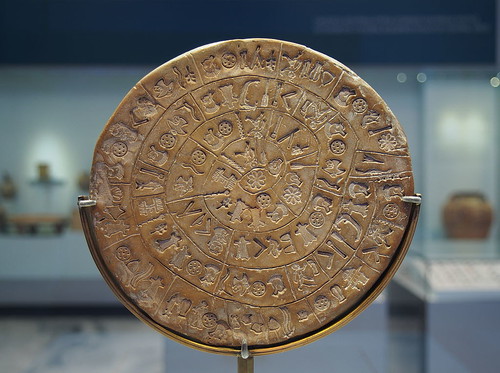 The Phaistos Disc, a disk of terracotta 16 cm in diameter covered on both sides with a spiral of stamped symbols, is made for the Minoan palace of Phaistos on the Greek island of Crete
The Phaistos Disc, a disk of terracotta 16 cm in diameter covered on both sides with a spiral of stamped symbols, is made for the Minoan palace of Phaistos on the Greek island of Crete -
1550 BC
 Rise of Mycenaean Civilization in mainland Greece begins under influences from Minoan Crete
Rise of Mycenaean Civilization in mainland Greece begins under influences from Minoan Crete -
1450 BCMycenaean Greeks conquer and replace Minoan Civilization on Crete
-
1899
 Sir Arthur Evans discovers the center of Minoan civilization on the island of Crete
Sir Arthur Evans discovers the center of Minoan civilization on the island of Crete -
March 16, 1900
 English archaeologist Sir Arthur Evans finds old city of Knossus
English archaeologist Sir Arthur Evans finds old city of Knossus
Labels:
Art,
Arthur Evans,
Bull-Leaping Fresco,
Crete,
Fresco,
History of Greece,
Minoan Civilization,
Minoan Eruption,
Mycenaean Civilization,
Painting,
Palace of Knossos,
Phaistos Disc,
Potter's Wheel,
Pottery,
Tsunami
Sunday, January 8, 2017
Anatomically Modern Human
-
200 Thousand Years Ago
 Anatomically modern human, who has more gracile frames, reduced brow ridges and vertical forehead, evolve from archaic Homo sapiens in East Africa
Anatomically modern human, who has more gracile frames, reduced brow ridges and vertical forehead, evolve from archaic Homo sapiens in East Africa -
70 Thousand Years AgoAnatomically modern humans leave Africa and start colonising the other continents, replacing the Neanderthals in Europe and other hominins in Asia
-
50 Thousand Years AgoHomo sapiens start colonising South Asia, replacing other hominins there
-
40 Thousand Years AgoHomo sapiens migrate to Australia and Europe, replacing the Neanderthals
-
32 Thousand Years Ago
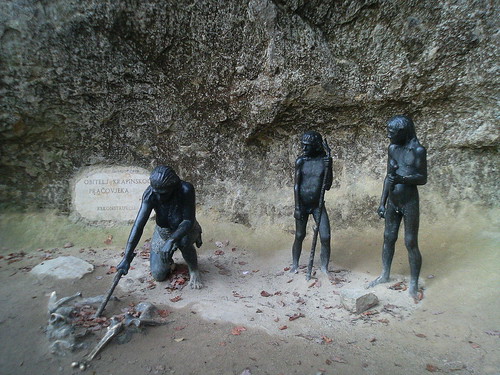 Neanderthals extinct in Europe as a result of competition with modern humans, who moves into their habitat
Neanderthals extinct in Europe as a result of competition with modern humans, who moves into their habitat
Tuesday, December 27, 2016
Rashidun Caliphate
-
June 8, 632
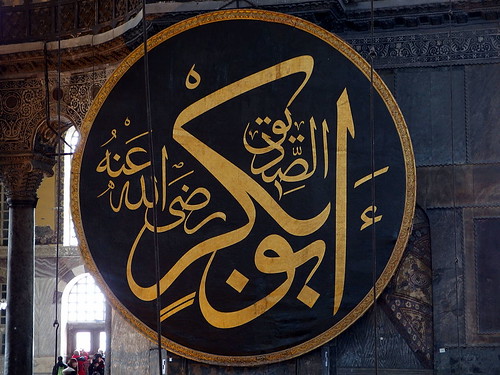 Mohammed, the founder of Islam and unifier of Arabia, dies, and Abu Bakr, his father-in-law, becomes first Caliph during Rashidun Caliphate, the term comprising the first four caliphs in Islam's history
Mohammed, the founder of Islam and unifier of Arabia, dies, and Abu Bakr, his father-in-law, becomes first Caliph during Rashidun Caliphate, the term comprising the first four caliphs in Islam's history -
August 22, 634Abu Bakr, successor of Mohammed and first Caliph, dies; Umar, a companion of the Islamic prophet Muhammad, becomes the second Caliph
-
634Byzantium city of Damascus is captured by the Muslims
-
August 15, 636At the Battle at Yarmuk Islamic forces under Khalid ibn al-Walid beat a Byzantine army under Emperor Heraclius and gain control of Syria and Palestine
-
638Caliph Umar ibn al-Khattab gives an assurance of safety to the people of Jerusalem
-
639Islamic armies invade Egypt
-
641Founding of Fustat near Cairo, the first capital of Egypt under muslim rule
-
November 8, 641
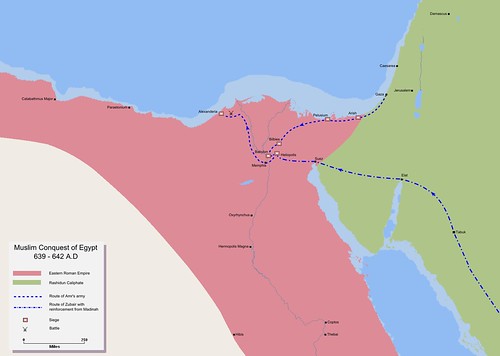 After a fourteen month siege Muslims take Alexandria from Byzantine Empire completing the conquests of Egypt
After a fourteen month siege Muslims take Alexandria from Byzantine Empire completing the conquests of Egypt -
642Muslim Arabs invade Armenia and capture Dvin, its principal town, slaughtered 12,000 of its inhabitants
-
642Islamic forces decisively defeat Persians at the battle of Nihawand completing the conquest of the Sassanid Empire
-
642The library at Alexandria, Egypt, disappears completely
-
November 7, 644Caliph Umar, one of the most powerful caliphs of the Rashidun Caliphate, dies after being stabbed by Pirouz Nahavandi while the morning prayer three days before
-
December 14, 644Uthman ibn Affan, one of the companions of Islamic prophet Muhammad, is appointed the third Caliph by council
-
650Zayd ibn Thabit, the personal scribe of Muhammad, with a group of some scribes complete the compilation of Muhammad's revelations into one work called the Koran
-
650Babylonian Talmud, a compilation of documents compiled over the period of Late Antiquity, is finalized in Mesopotamia
-
651
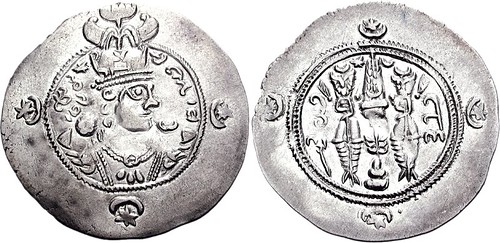 Sassanid king Yazdegerd III is assassinated by local miller while his attempt to flee from Merv, marking end of Sassanid Dynasty in Persia
Sassanid king Yazdegerd III is assassinated by local miller while his attempt to flee from Merv, marking end of Sassanid Dynasty in Persia -
June 20, 656
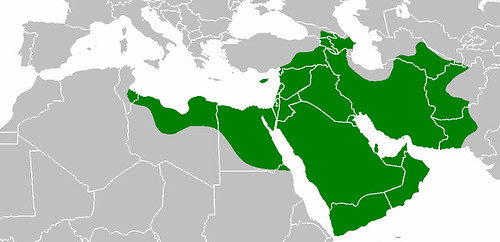 Caliph Uthman ibn Affan is assassinated, thus Ali becomes caliph
Caliph Uthman ibn Affan is assassinated, thus Ali becomes caliph -
November 7, 656
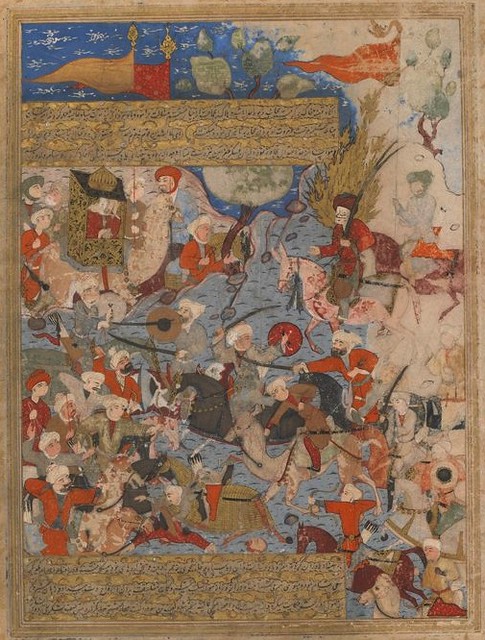 Rashidun Caliphate beats rebel forces at the Battle of the Camel, the first battle of First Islamic Civil War
Rashidun Caliphate beats rebel forces at the Battle of the Camel, the first battle of First Islamic Civil War -
July 26, 657
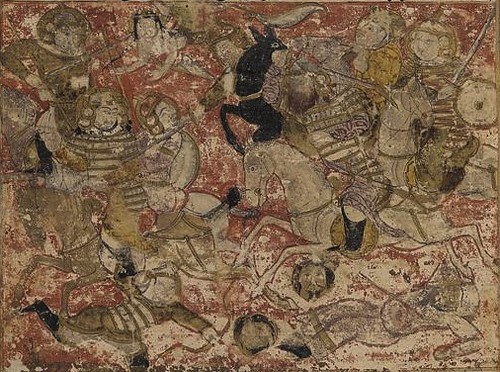 Battle of Siffin occurs between Governor of Syria Muawiyah I and Rashidun Caliphate during the first Muslim civil war
Battle of Siffin occurs between Governor of Syria Muawiyah I and Rashidun Caliphate during the first Muslim civil war -
January 31, 661Muawiyah I, the governor of Levant, founds Umayyad Dynasty in Damascus, after Ali, the last Caliph of Rashidun Caliphate dies, wounded by poison-coated sword while praying in mosque in Iraq three days before, which marks the split of Islam into Sunni and Shi'a branches
Labels:
Abu Bakr,
Ali,
Asia,
Battle at Yarmuk,
Battle of the Camel,
Cairo,
Caliphs,
Islam,
Koran,
Medina,
Muawiyah I,
Muhammad,
Muslim Conquests,
Pirouz Nahavandi,
Rashidun Caliphate,
Umar,
Uthman ibn Affan,
Yazdegerd III
Wednesday, October 5, 2016
Seleucus I Nicator
-
358 BC
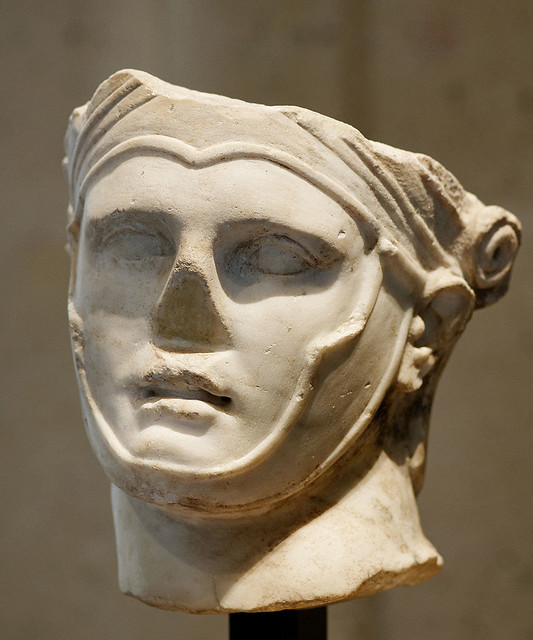 Seleucus I Nicator, one of the Diadochi and the founder of the Seleucid Empire, is born in family of Philip II of Macedon's generals in Europos, the northern part of Macedonia
Seleucus I Nicator, one of the Diadochi and the founder of the Seleucid Empire, is born in family of Philip II of Macedon's generals in Europos, the northern part of Macedonia -
May, 326 BC
 Macedonian army under Alexander the Great defeats Indian king Porus at the battle of The Hydaspes River in Punjab, modern-day Pakistan, expanding Alexandrian Empire to its maximum extent
Macedonian army under Alexander the Great defeats Indian king Porus at the battle of The Hydaspes River in Punjab, modern-day Pakistan, expanding Alexandrian Empire to its maximum extent -
324 BC, FebruarySeleucus marries Apama, the Persian princess Apama, at the great marriage ceremony at Susa, arranged by Alexander of Macedon
-
June 13, 323 BC
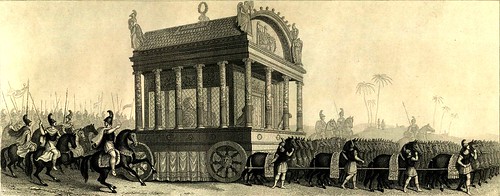 Alexander the Great dies of fever after a feast in Babylon, which causes wars of the Diadochoi, his generals and friends, in the Empire
Alexander the Great dies of fever after a feast in Babylon, which causes wars of the Diadochoi, his generals and friends, in the Empire -
321 BCAfter assassination of Perdiccas, the regent of Alexander's empire, during The First War of the Diadochi, and partition of the empire between Perdiccas' opponents, Seleucus is appointed Satrap of Babylon under the new regent Antipater
-
312 BC
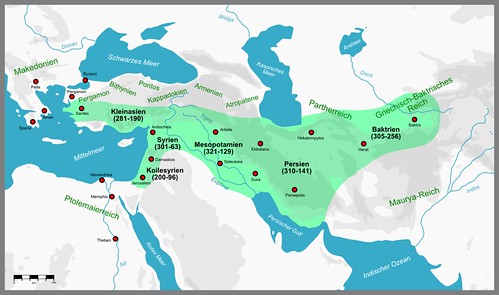 Being forced to flee Babylon by Antigonus, Seleucus I Nicator returns to Babylon with the support of Ptolemy I Soter and formally establishes Seleucid Empire in Mesopotamia
Being forced to flee Babylon by Antigonus, Seleucus I Nicator returns to Babylon with the support of Ptolemy I Soter and formally establishes Seleucid Empire in Mesopotamia -
305 BCSeleucus I Nicator, the Basileus of the Seleucid Empire, founds the city of Seleucia on the Tigris and makes it new capital of the empire, which eventually depopulates Babylon
-
305 BC
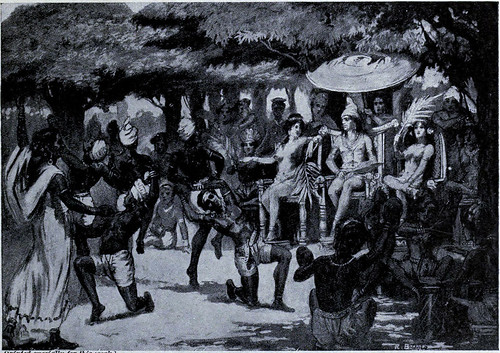 Chandragupta Maurya, the first emperor of Mauryan Empire, seizes the satrapies of Paropanisadai, Aria, Arachosia and Gedrosia from Seleucus I Nicator, the Macedonian satrap of Babylonia, in return for 500 elephants
Chandragupta Maurya, the first emperor of Mauryan Empire, seizes the satrapies of Paropanisadai, Aria, Arachosia and Gedrosia from Seleucus I Nicator, the Macedonian satrap of Babylonia, in return for 500 elephants -
301 BC
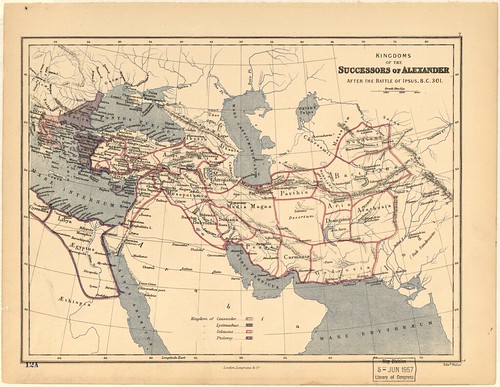 Antigonus I Monophthalmus, a Macedonian general and satrap under Alexander the Great, is defeated and killed by the united forces of Seleucus and Lysimachus at battle of Ipsus, ending the Fourth War of the Diadochi and confirming dissolution of Alexander's empire
Antigonus I Monophthalmus, a Macedonian general and satrap under Alexander the Great, is defeated and killed by the united forces of Seleucus and Lysimachus at battle of Ipsus, ending the Fourth War of the Diadochi and confirming dissolution of Alexander's empire -
281 BC
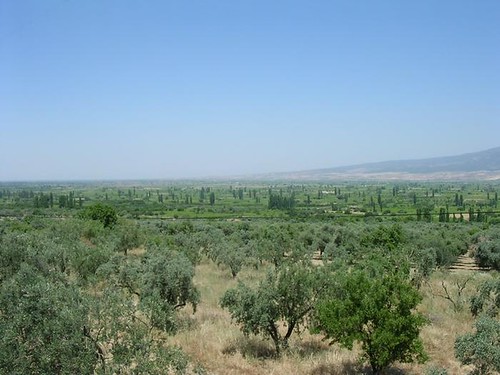 Seleucus I Nicator invades Asia Minor and defeats Lysimachus, the King of Macedon and his last rival, in the Battle of Corupedium in Lydia, which leaves him the only living contemporary of Alexander the Great
Seleucus I Nicator invades Asia Minor and defeats Lysimachus, the King of Macedon and his last rival, in the Battle of Corupedium in Lydia, which leaves him the only living contemporary of Alexander the Great -
281 BC
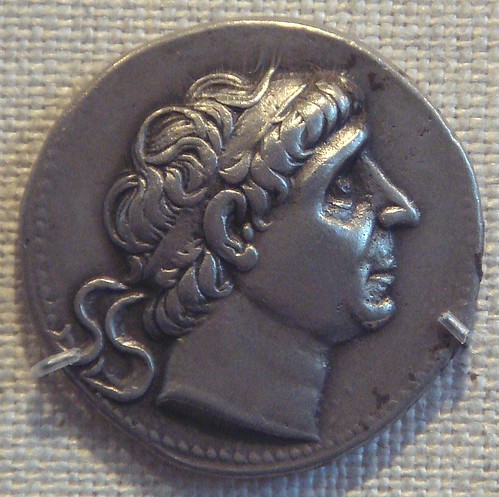 Seleucus I Nicator, the founder of the Seleucid Empire, is assassinated by the King of Macedon Ptolemy Ceraunus, and is succeeded by his son Antiochus I as ruler of the Seleucid empire
Seleucus I Nicator, the founder of the Seleucid Empire, is assassinated by the King of Macedon Ptolemy Ceraunus, and is succeeded by his son Antiochus I as ruler of the Seleucid empire
Saturday, September 17, 2016
Jean-Jacques Dessalines
-
September 20, 1758
 Jean-Jacques Dessalines, the first ruler of an independent Haiti, is born and named after his owner Jean-Jacques Duclos, in Guinea
Jean-Jacques Dessalines, the first ruler of an independent Haiti, is born and named after his owner Jean-Jacques Duclos, in Guinea -
August 22, 1791
 Haitian Revolution, the only slave revolt which led to the founding of a state, begins in the French colony of Saint-Domingue
Haitian Revolution, the only slave revolt which led to the founding of a state, begins in the French colony of Saint-Domingue -
May 6, 1794
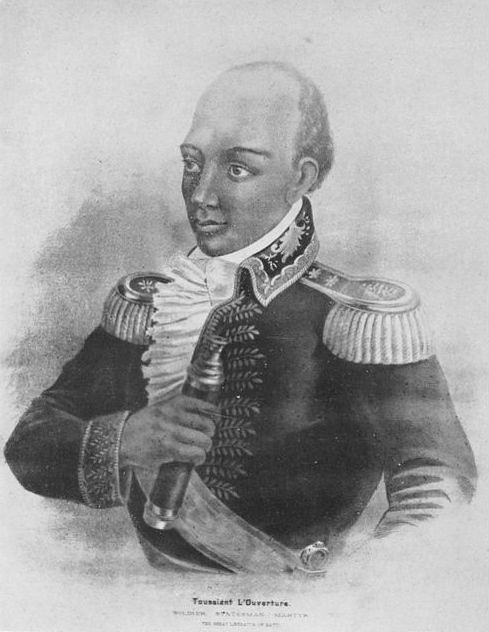 After the French declared an end to slavery, Toussaint Louverture, Haitian rebel leader, ends his alliance with the Iberian monarchy and embraces the French Republicans
After the French declared an end to slavery, Toussaint Louverture, Haitian rebel leader, ends his alliance with the Iberian monarchy and embraces the French Republicans -
1801Dessalines cruelly supresses an insurrection in the north led by Toussaint Louverture's nephew, General Moyse
-
March 22, 1802
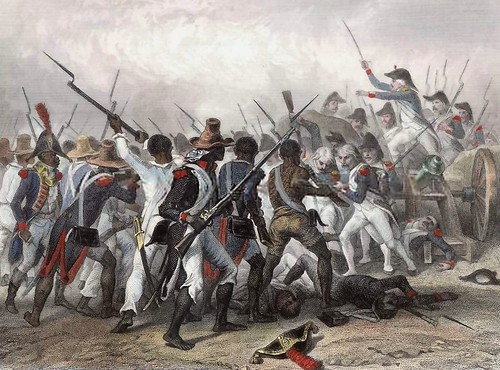 After a 20-day siege Dessalines and his 1,300 men are forced to abandon strategically important Crete-a-Pierrot fort and go into the Cahos Mountains through the enemy lines being largely intact
After a 20-day siege Dessalines and his 1,300 men are forced to abandon strategically important Crete-a-Pierrot fort and go into the Cahos Mountains through the enemy lines being largely intact -
1802, OctoberAfter the betrayal and capture of Toussaint Louverture and re-establishment slavery in Guadeloupe by France, Dessalines becomes the leader of the revolution
-
November 18, 1803Jean-Jacques Dessalines, Haitian rebel leader, leads his army to decisive victory over the French at the Battle of Vertieres, the last major battle of the the Haitian Revolution
-
January 1, 1804
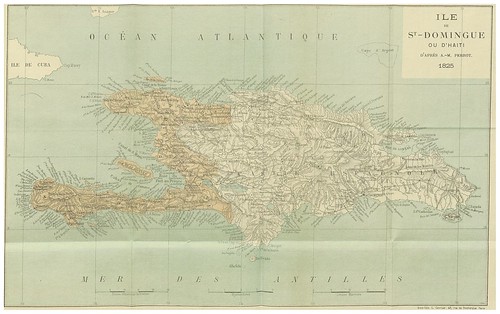 Jean-Jacques Dessalines declares independence from France and proclaims the Republic of Haiti, making it the only nation in the world established as a result of a successful slave revolt
Jean-Jacques Dessalines declares independence from France and proclaims the Republic of Haiti, making it the only nation in the world established as a result of a successful slave revolt -
April 20, 1804
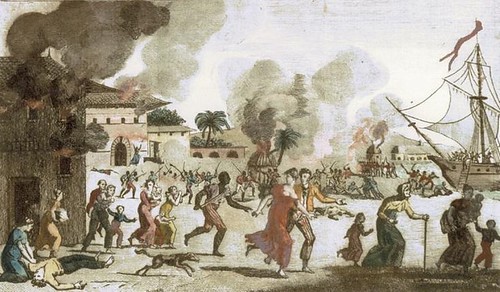 Jean-Jacques Dessalines, Haitian rebel leader, commands 1804 Haiti Massacre of the French at town of Cape Francois, during which the white Haitians were practically eradicated
Jean-Jacques Dessalines, Haitian rebel leader, commands 1804 Haiti Massacre of the French at town of Cape Francois, during which the white Haitians were practically eradicated -
October 8, 1804
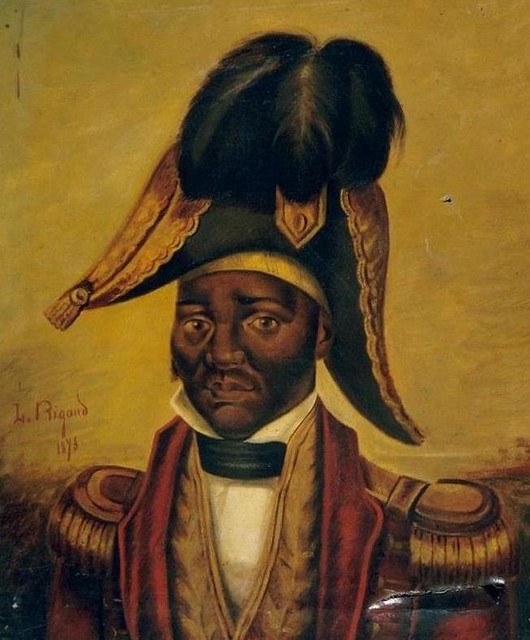 Jean-Jacques Dessalines, Governor-General of Haiti, crowns himself James I, Emperor of Haiti with the right to name his successor, in the city of Le Cap
Jean-Jacques Dessalines, Governor-General of Haiti, crowns himself James I, Emperor of Haiti with the right to name his successor, in the city of Le Cap -
May 20, 1805The Imperial Constitution of Haiti, which names Dessalines emperor for life with the right to name his successor, is released
-
October 17, 1806Jean-Jacques Dessalines, the Emperor of Haiti, is assassinated by members of his administration after a meeting to negotiate the future of the young nation
Subscribe to:
Posts (Atom)